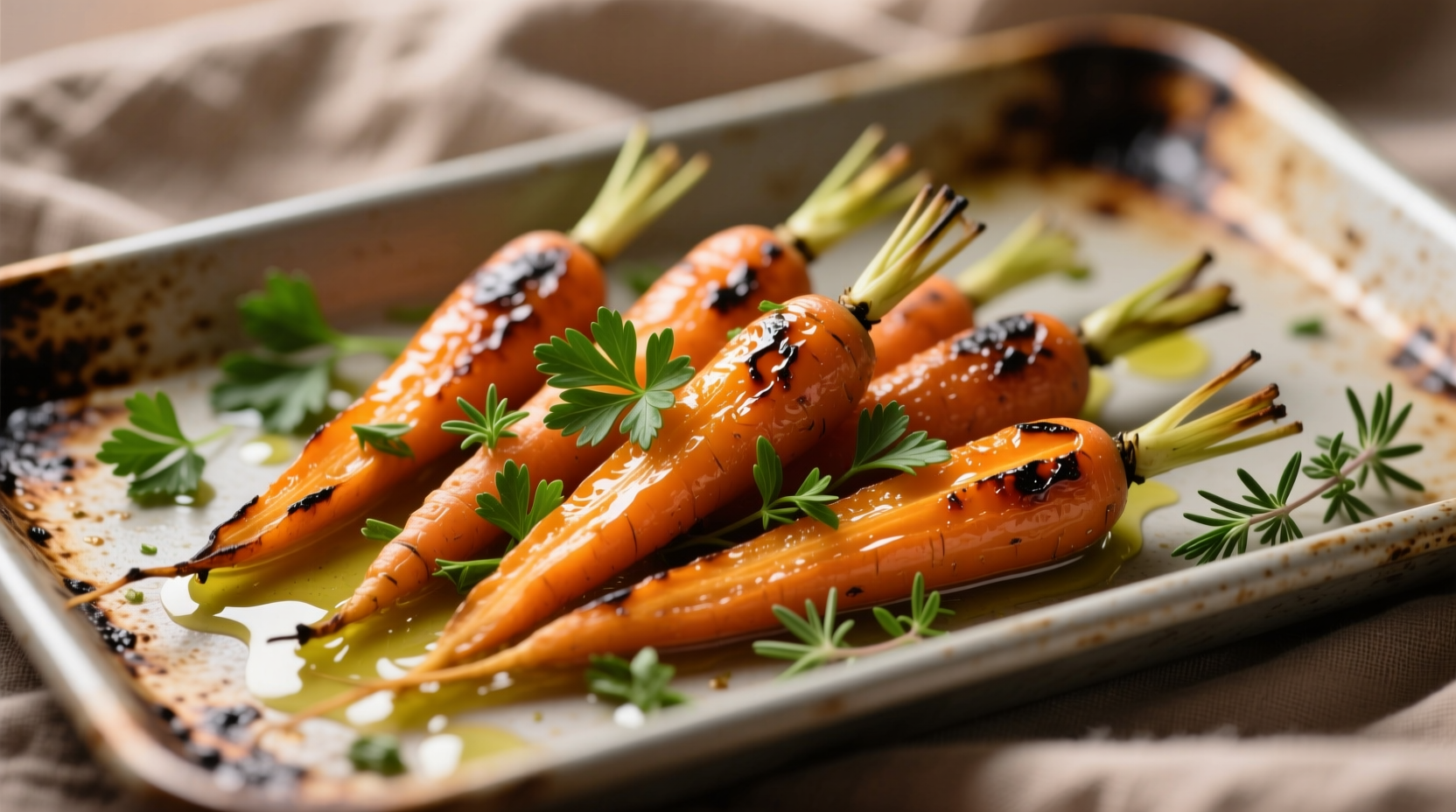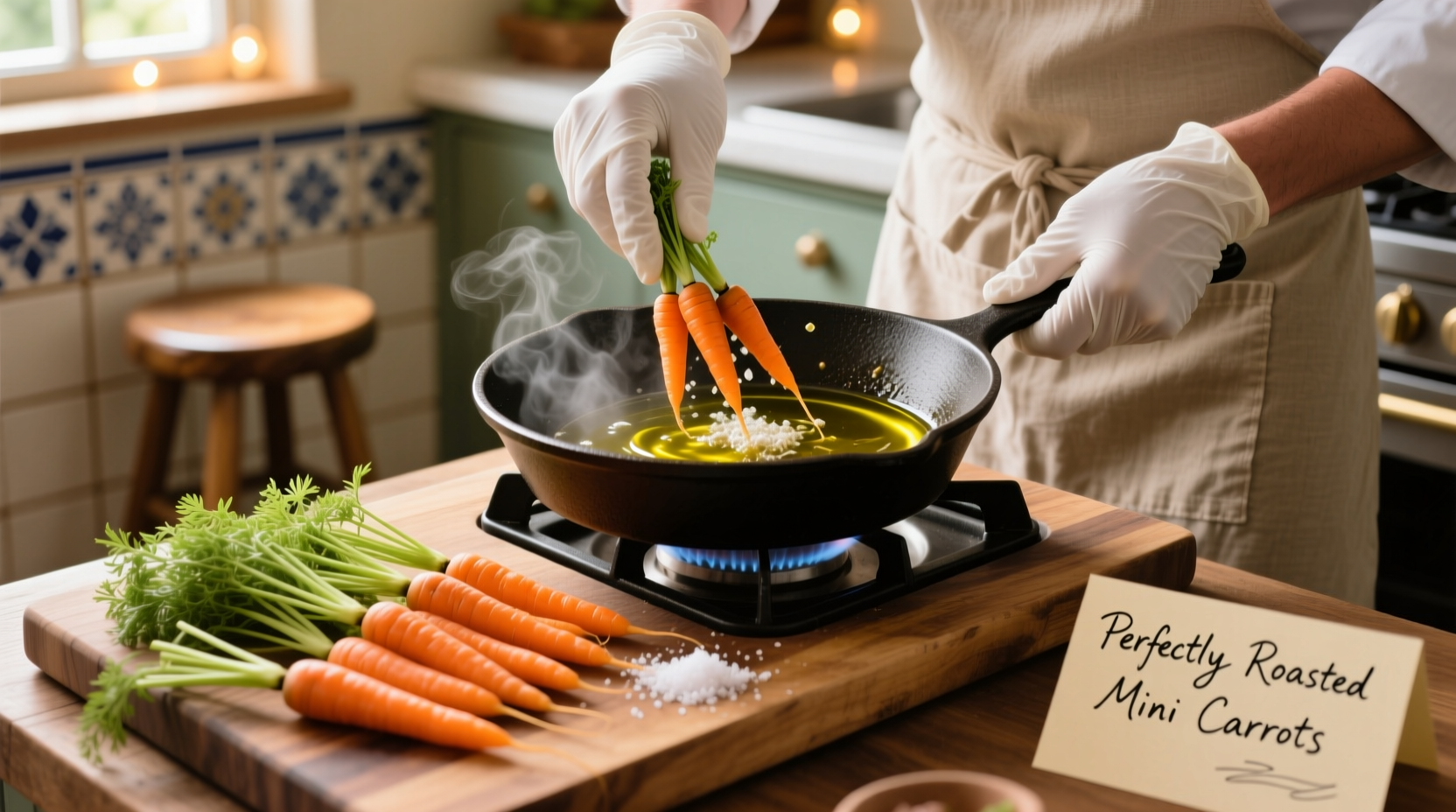Mini carrots, also known as baby-cut carrots, offer a convenient and flavorful addition to any meal. Unlike their larger counterparts, these slender vegetables cook quickly while maintaining a perfect balance of tenderness and crispness. The USDA National Nutrient Database confirms that a 100g serving provides 284% of your daily vitamin A needs while containing only 35 calories, making them both nutritious and diet-friendly.
Why Mini Carrots Deserve a Spot in Your Kitchen
Mini carrots have gained popularity for good reason—they're not just regular carrots cut down. Developed through selective breeding, these naturally small carrots (Daucus carota subsp. sativus var. amoenus) maintain consistent diameter throughout, eliminating the need for peeling in most cases. According to agricultural research from the University of California, Davis, their compact size allows for more even cooking and better flavor concentration compared to standard carrots.
| Cooking Method | Time Required | Best For | Flavor Profile |
|---|---|---|---|
| Roasting | 20-25 minutes | Weekend meals, dinner parties | Caramelized sweetness, deep flavor |
| Steaming | 8-12 minutes | Quick weeknight sides, nutrient preservation | Clean, bright carrot flavor |
| Sautéing | 10-15 minutes | Flavor integration, quick preparation | Buttery, herb-infused complexity |
Essential Prep Work: Setting Yourself Up for Success
Before cooking mini carrots, proper preparation ensures optimal results. Contrary to popular belief, most mini carrots don't require peeling—their thin skin contains valuable nutrients. Simply scrub them thoroughly under cold running water using a soft vegetable brush. The FDA recommends washing all produce under running water to remove potential contaminants, even if you plan to peel them.
For uniform cooking, sort your mini carrots by size—smaller ones cook faster. If you notice any particularly thick specimens, slice them lengthwise to ensure even cooking. Never soak mini carrots in water, as this leaches nutrients and affects texture.
Method 1: Effortless Oven Roasting for Maximum Flavor
Roasting concentrates the natural sugars in mini carrots, creating caramelized edges while maintaining tender-crisp texture. Professional chefs at the Culinary Institute of America recommend this method for developing complex flavors with minimal effort.
- Preheat oven to 400°F (200°C)—this temperature creates the perfect balance between caramelization and cooking time
- Toss 1 pound of mini carrots with 1½ tablespoons olive oil, 1 teaspoon sea salt, and ½ teaspoon freshly ground black pepper
- Spread in a single layer on a parchment-lined baking sheet (crowding causes steaming instead of roasting)
- Raise the baking sheet to the middle rack and roast for 20-25 minutes, flipping halfway through
- Test for doneness: Carrots should be tender when pierced with a fork but still offer slight resistance
For restaurant-quality results, add flavor variations during the last 5 minutes of cooking:
- Mediterranean style: Toss with fresh rosemary and a drizzle of lemon juice
- Sweet & savory: Add 1 tablespoon honey and 2 minced garlic cloves
- Spiced option: Sprinkle with cumin and coriander before serving

Method 2: Quick Steaming for Nutrient Preservation
When you need a fast, healthy side dish that preserves maximum nutrients, steaming delivers excellent results. The American Journal of Clinical Nutrition reports that steaming preserves up to 90% of vitamin A in carrots compared to boiling's 60-70% retention.
Follow these steps for perfect steamed mini carrots:
- Fill a pot with 1 inch of water and bring to a gentle simmer (not a rolling boil)
- Place mini carrots in a steamer basket, ensuring they don't touch the water
- Cover with a tight-fitting lid and steam for 8-12 minutes
- Check tenderness at 8 minutes—ideal texture is tender-crisp with slight resistance
- Immediately transfer to a serving dish to stop cooking
Enhance your steamed mini carrots with these finishing touches:
- Toss with 1 teaspoon of unsalted butter and fresh dill
- Sprinkle with toasted sesame seeds and a dash of rice vinegar
- Add a pinch of smoked paprika for depth without extra calories
Method 3: Flavorful Sautéing for Quick Weeknight Meals
Sautéing mini carrots creates a beautifully browned exterior while maintaining crisp-tender texture inside. This technique works particularly well when you want to incorporate carrots into a larger meal preparation.
- Heat 1½ tablespoons of high-smoke point oil (avocado or grapeseed) in a skillet over medium heat
- Add mini carrots in a single layer—don't overcrowd the pan
- Cook undisturbed for 4-5 minutes to develop a golden crust
- Flip and continue cooking for another 6-10 minutes, stirring occasionally
- Add 2 tablespoons of water, cover, and steam for 2 minutes to finish cooking
- Uncover and cook until any remaining liquid evaporates
For professional flavor development, add ingredients at these critical points:
- With the oil: 1 crushed garlic clove (remove before serving to prevent burning)
- During cooking: 1 teaspoon fresh thyme leaves
- At the end: 1 tablespoon fresh lemon juice and 1 teaspoon honey
Avoiding Common Mini Carrot Cooking Mistakes
Even experienced cooks make these preventable errors when preparing mini carrots:
- Overcooking: Mini carrots become mushy quickly—check for doneness starting at 8 minutes for steaming or 15 minutes for roasting
- Crowding the pan: When sautéing or roasting, overcrowding creates steam instead of browning—use multiple pans if necessary
- Adding salt too early: For roasting, add salt after the first 10 minutes to prevent moisture retention
- Using low-quality oil: Choose oils with high smoke points (avocado, grapeseed, or light olive oil) for best results
Flavor Pairing Guide for Perfectly Seasoned Mini Carrots
Mini carrots pair beautifully with a wide range of flavors. Food scientists at the Flavor Research and Education Center have identified these complementary flavor compounds that enhance carrots' natural sweetness:
- Herbs: Dill, thyme, rosemary, and tarragon (add delicate herbs like dill at the end of cooking)
- Spices: Cumin, coriander, smoked paprika, and a pinch of cinnamon
- Acids: Lemon juice, apple cider vinegar, or balsamic reduction (add acids at the end)
- Fats: Extra virgin olive oil, browned butter, or toasted sesame oil
- Sweet elements: Honey, maple syrup, or a touch of orange zest
For meal-specific pairings:
- With poultry: Rosemary and lemon
- With fish: Dill and orange
- With red meat: Thyme and balsamic
- Vegan options: Toasted almonds and tamari
Storing and Repurposing Leftover Mini Carrots
Proper storage extends the life of cooked mini carrots while maintaining quality. The National Center for Home Food Preservation recommends:
- Cool cooked carrots completely before storing
- Store in an airtight container in the refrigerator for up to 4 days
- Freeze for longer storage (up to 12 months) in portion-sized containers
- Revive leftovers by briefly reheating in a skillet with a splash of water
Creative ways to use leftover mini carrots:
- Blend into soups for natural sweetness and color
- Add to grain bowls or salads
- Puree with broth for a quick sauce base
- Chop finely and incorporate into frittatas or omelets











 浙公网安备
33010002000092号
浙公网安备
33010002000092号 浙B2-20120091-4
浙B2-20120091-4